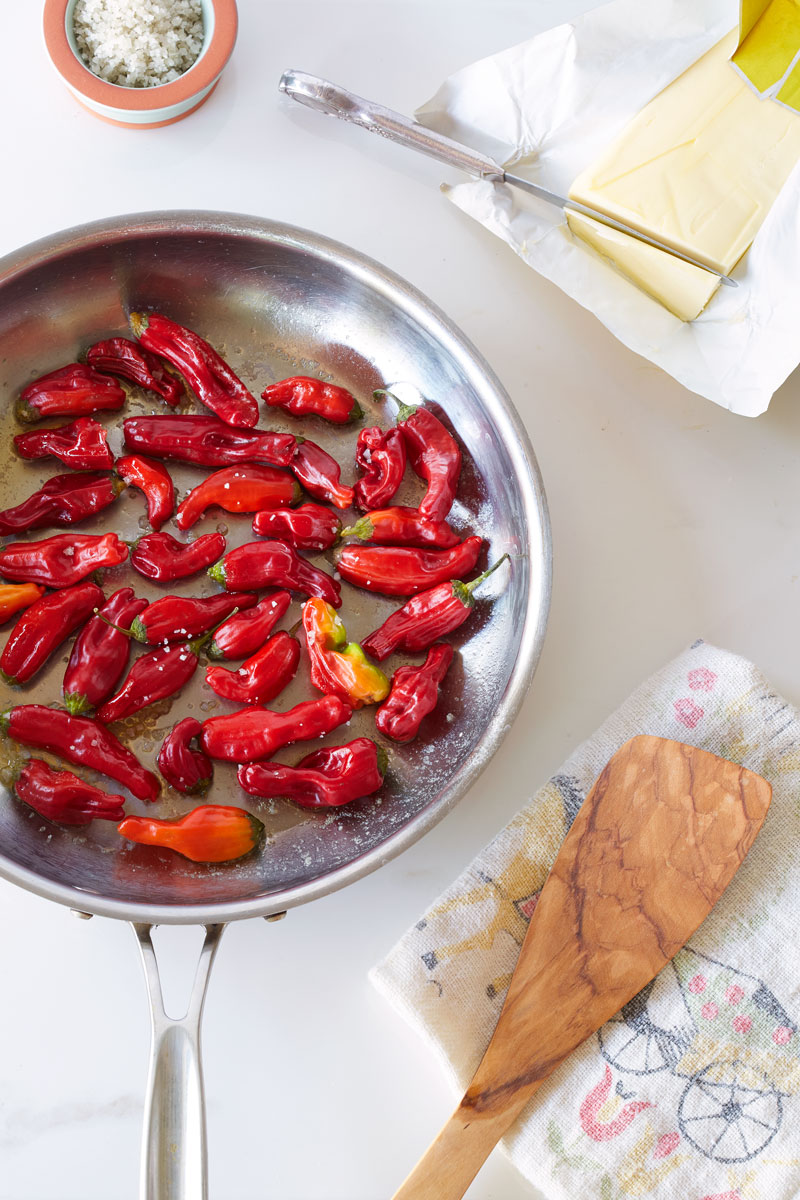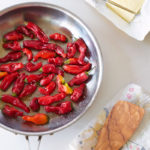

Red or green, Shishito Peppers are bound to cause some finger lickin’ round your table
Shishito peppers are one of those foods that seemingly burst on the scene a few years ago, now to be found as an appetizer at just about any hip, comfort food serving restaurant. Thankfully they’re easy as can be to make at home and even better when using good fats and healthy homemade dips!
Perfectly blistered shishito peppers are an excellent finger food for a dinner party appetizer or a solo snack, but they also work well tossed into a salad or paired with a cooked meal.
Better yet, they’re the perfect delivery vehicle for Fermented Aioli, or for a vegan option, with Miso & Toasted Sesame Dressing. Should you only have time to fry up the peppers and don’t have any dips awaiting you in the fridge, just drizzle with some lime and Celtic Sea Salt for a simple, finger lickin’ treat.
Cooking Notes
Slow and Steady
Place the oil in the pan and let it get very hot. Add the shishito peppers and sear on medium-high heat for about a minute. Next be sure to reduce the heat to medium-low and cook gently while covered with a lid.
Don’t forget to flip them every 3 minutes or so to prevent burn. Give a pepper a taste at about 10 minutes cooking time to see if it’s cooked through to your liking. You may opt to sear them for a couple more minutes at the end.
Just be sure to avoid burning the peppers. Any food that’s been blackened is carcinogenic, and truthfully they’re much tastier with a golden sear. When restaurants serve shishitos blackened to a crisp, that’s not for your tasting pleasure, but just a sign of a hurried kitchen.
Fat or Oil
If you’re not vegan or vegetarian, use butter, ghee, lard or tallow from grassfed cows to fry the peppers. These fats won’t oxidize under high heat and will impart a delicious richness, as well as infuse the peppers with added vitamins and minerals.
If you’ed prefer to use a plant based oil for frying, palm oil is a great choice in terms of neutral flavor and stability when exposed to high heat. Just be sure to buy a brand like Nutiva, which is sourced from palms grown on small organic farms under Fair Trade conditions–protecting both the environment and the people that produce the oil.
Palm oil has been rather controversial as agro-biz corporations have contributed to massive deforestation in supplying cheap palm oil for the processed food-product industry. Buying a carefully sourced, high quality palm oil for personal use is just like buying any other food product responsibly, with consideration for both our environment and the food producer’s welfare.
If you’re in a bind and only have olive oil on hand, just be mindful of not letting it get too hot. Sear on medium heat and cook a little longer if needed, so as not to oxidize the fragile oil.
Red or green
Finally, my shishito peppers are red, but you’ll likely be using the green variety. Either way they’re just as delicious. If you can get red ones they will however be more nutritious because red shishito peppers are simply mature, or ripe shishitos.
Red shishito peppers are a tiny bit sweeter and have fewer seeds, otherwise they have a similar flavor. I’ve been privy to these red beauties from a wonderful organic farm at my local Hollywood Farmer’s Market.
As the season progressed I witnessed the green peppers yielding to more and more red ones with each week’s harvest. Have a look around at your local Farmer’s Market and perhaps you’ll find yourself in luck!




